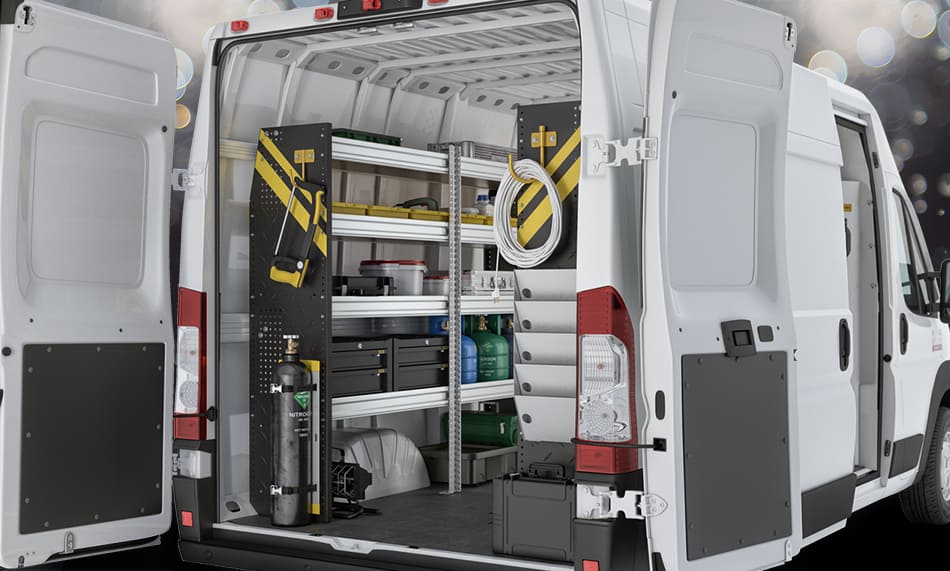Fleet rightsizing is a management practice that can help vehicle fleet managers build and maintain sustainable, fuel-efficient fleets. Fleet inventories often grow over time to include vehicles that are highly specialized, rarely used, or unsuitable for current applications. By evaluating fleet size and composition, managers can optimize vehicle use, conserve fuel, reduce emissions, and save money on fuel and maintenance.
Evaluate Vehicle Needs and Use
Fleet managers should understand their fleet's daily vehicle use and needs. Most fleet managers already have a handle on their number and type of vehicles, average mileage, payloads, and fuel economy. Fleet rightsizing combines this information with a critical look at fleet operations to identify opportunities to reduce energy use. When rightsizing, fleet managers should evaluate how important each vehicle is to the fleet’s performance by asking themselves:
What tasks are accomplished by each vehicle? Or, what is the drive cycle?
What is the daily, weekly, or monthly mileage of each vehicle? Or, what is the duty cycle?
Are fleet vehicles the optimal vehicle type, class, and size for the job?
Are there any vehicles that are no longer cost effective to operate or are no longer fulfilling their purpose?
Are there any vehicles that are no longer being used or have experienced a lot of downtime?
What is the fuel consumption of each vehicle? Can any vehicles be replaced by lighter, more fuel-efficient vehicles?
What is the age of the vehicles? Can any vehicles be replaced by newer, more efficient and reliable vehicles?
Are there any alternatives to owning or leasing a vehicle, such as shuttle bus services, motor pool vehicles, sharing vehicles with other offices/agencies, vehicle stipends, public transportation, or short-term rentals when needed?
Considering the answers to the previous questions, what is the optimal composition of the fleet required to properly support the fleet’s needs?
In addition to reviewing telematics or fleet analysis data, fleet managers should consider soliciting input from drivers when conducting a rightsizing review, as they can be very knowledgeable about how vehicles are being used to support operations. Gathering this input also gives drivers a stake in the development of rightsizing recommendations. Fleet managers can solicit input through driver surveys or face-to-face meetings to establish consensus.
A fleet rightsizing strategy should evaluate the business case of each vehicle to determine whether reassigning, replacing, or eliminating the vehicle would reduce fuel and maintenance costs without compromising fleet activities. Fleet managers often need to define evaluation criteria and rank vehicles to complete this analysis. A fleet dominated by sport utility vehicles, for example, may find that mid-size sedans can suffice with a significant reduction in fuel costs.
Make Smart Vehicle Purchases
Fleet managers may decide to replace older vehicles with more fuel-efficient or alternative fuel vehicles. These purchasing strategies may help fleet managers make decisions that meet operational needs and conserve fuel:
Transition to Smaller, More Efficient Engines: Using smaller engines can help fleets meet operational needs without downgrading vehicle class. Some fleets choose to switch from 6-cylinder to 4-cylinder engines to help reduce fuel use and emissions. In many cases, the new, smaller engine can have nearly the same horsepower as a larger engine. Fleet managers can also improve fuel efficiency by selecting smaller engines with optional gearing for their application.
Choose Lighter Vehicles: When purchasing new vehicles, look for opportunities to reduce vehicle weight. Lightweight materials, such as aluminum frames, and smaller components can reduce rolling resistance and drag, thereby improving a vehicle’s fuel economy. For example, a 10% reduction in vehicle weight can improve fuel economy by 6% to 8%. Also, try to avoid unnecessarily large body configurations and heavy accessories. For more information, refer to the North American Council for Freight Efficiency's Confidence Report.
Use Alternative Fuels and Vehicles: Alternative fuel and fuel-efficient advanced vehicles can reduce a fleet's fuel use, making them economical options for many fleets. Cost savings from vehicle maintenance, operation, and fuel use and price often offset higher purchase prices.
Source: https://afdc.energy.gov/conserve/rightsizing.html



